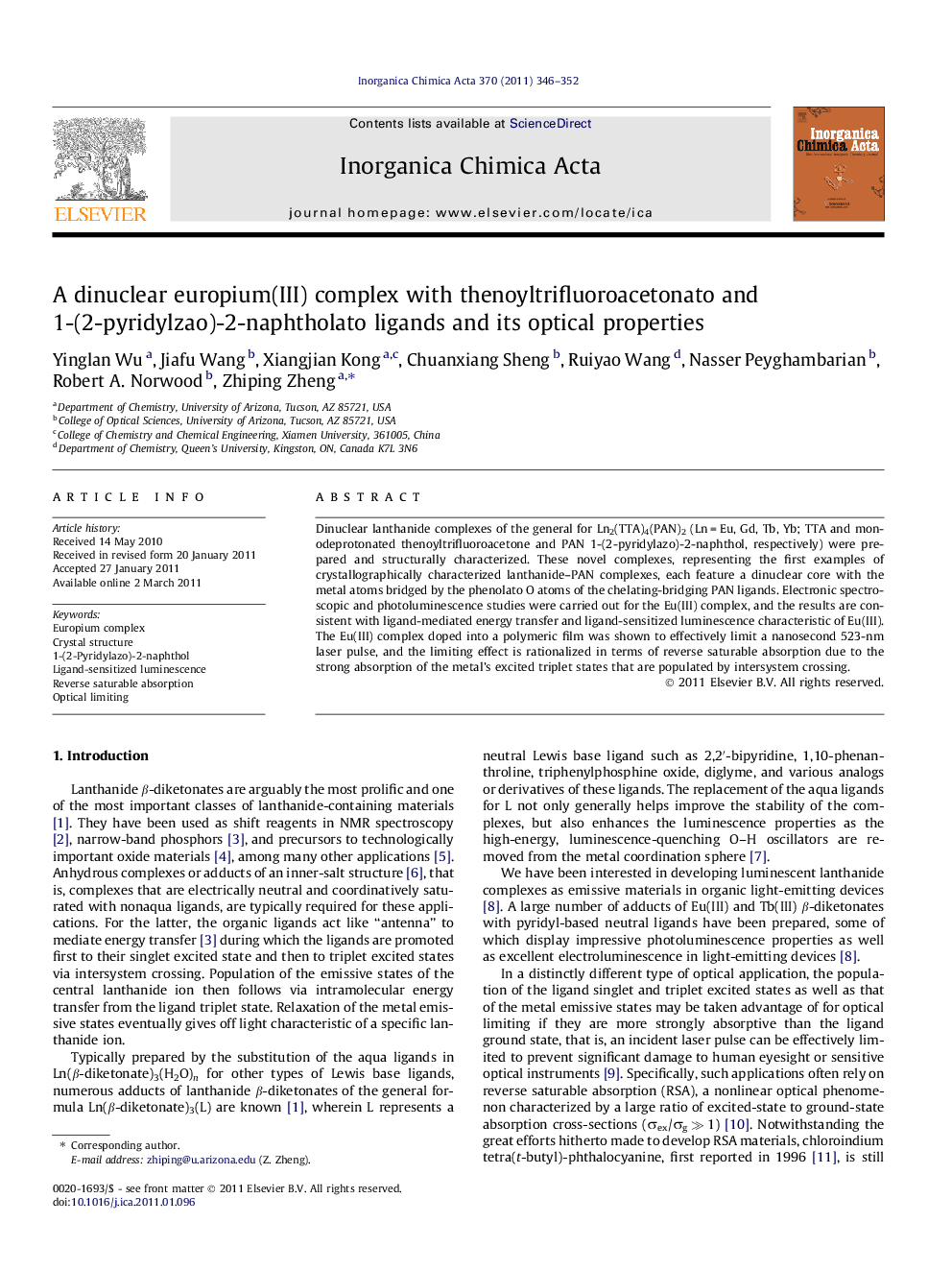| Article ID | Journal | Published Year | Pages | File Type |
|---|---|---|---|---|
| 1306300 | Inorganica Chimica Acta | 2011 | 7 Pages |
Dinuclear lanthanide complexes of the general for Ln2(TTA)4(PAN)2 (Ln = Eu, Gd, Tb, Yb; TTA and monodeprotonated thenoyltrifluoroacetone and PAN 1-(2-pyridylazo)-2-naphthol, respectively) were prepared and structurally characterized. These novel complexes, representing the first examples of crystallographically characterized lanthanide–PAN complexes, each feature a dinuclear core with the metal atoms bridged by the phenolato O atoms of the chelating-bridging PAN ligands. Electronic spectroscopic and photoluminescence studies were carried out for the Eu(III) complex, and the results are consistent with ligand-mediated energy transfer and ligand-sensitized luminescence characteristic of Eu(III). The Eu(III) complex doped into a polymeric film was shown to effectively limit a nanosecond 523-nm laser pulse, and the limiting effect is rationalized in terms of reverse saturable absorption due to the strong absorption of the metal’s excited triplet states that are populated by intersystem crossing.
Graphical abstractDinuclear lanthanide complexes of the general formula Ln2(TTA)4(PAN)2 (Ln = Eu, Gd, Tb, Yb; TTA and PAN are monodeprotonated thenoyltrifluoroacetone and 1-(2-pyridylazo)-2-naphthol, respectively) were prepared and structurally characterized. The Eu(III) complex was shown to display characteristic, ligand-sensitized red luminescence and to limit nanosecond 523-nm laser pulse when doped into a polymeric film. The limiting effect is rationalized in terms of reverse saturable absorption due to the strong absorption of the metal’s excited states that are populated by the spin–orbital coupling effect.Figure optionsDownload full-size imageDownload as PowerPoint slideResearch highlights► Synthesis and structural determination of a series of dinuclear lanthanide complexes. ► Photoluminescence studies of the Eu(III) complex. ► Limiting of nanosecond 523-nm laser pulse by the Eu(III) complex. ► Mechanisms possibly responsible for laser-limiting by lanthanide complexes.
